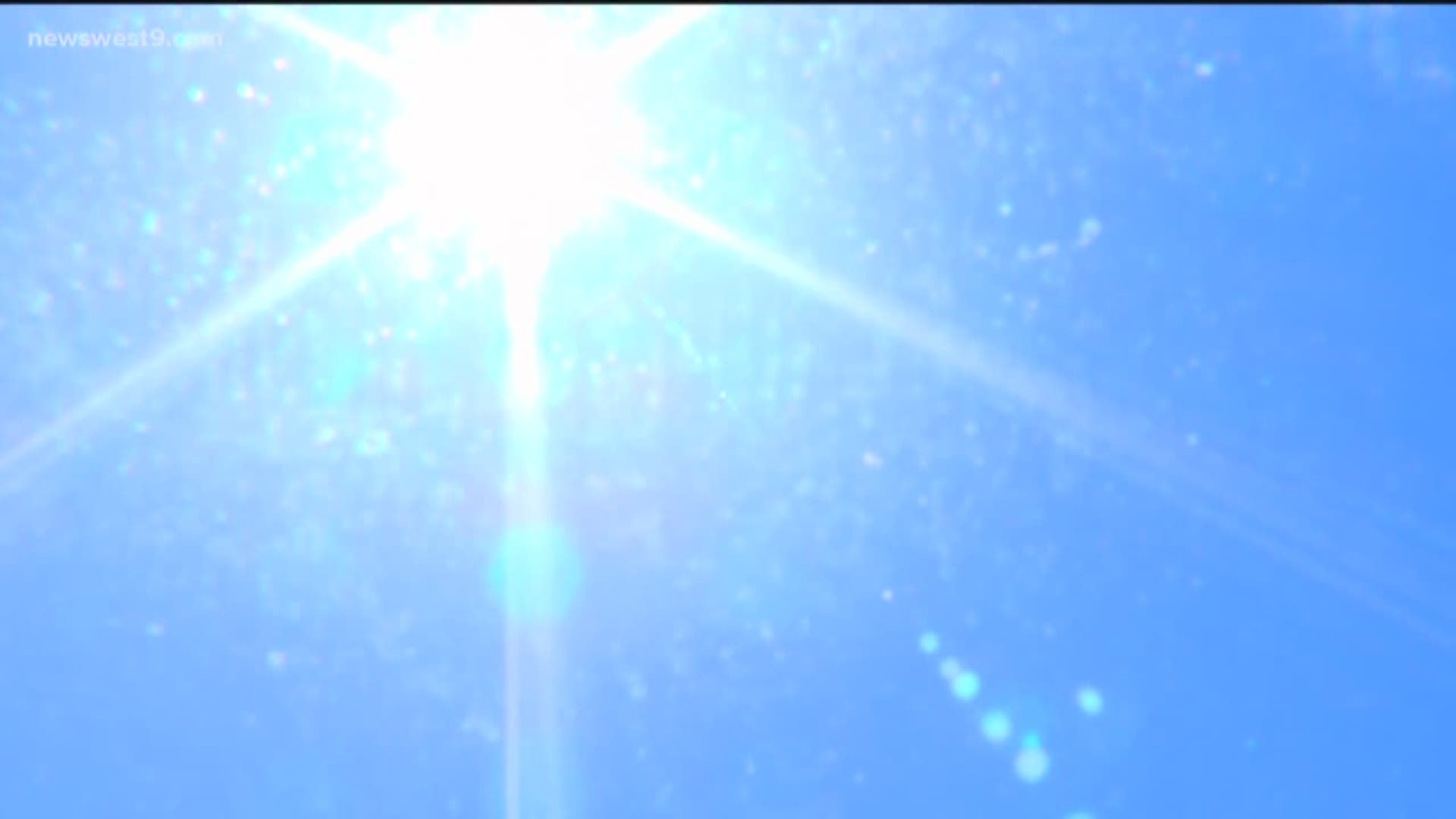In the Permian Basin, most people work a 9 to 5 outside in the sun. And the West Texas sun can take a real beating on people’s skin and cause melanoma.
According to the Skin Cancer Foundation, more than than 9,500 people are diagnosed with skin cancer in the United States everyday.
The National Weather Service says the Permian Basin’s ultraviolet index usually reaches a 9 or 10, the highest the scale goes, nearly every day of the summer putting West Texans at risk for skin cancer.
“We’re seeing it much more frequently in patient populations but there’s no doubt that the two biggest causes of sun exposure are occupational sun exposure and recreational sun exposure,” said Russell Akin, Midland dermatologist.
Akin adds that people's outdoor occupations either in the oil field or in agriculture make them a target for skin cancer.
According to the Skin Cancer Foundation, more people are diagnosed with skin cancer than any other cancer combined.
“It’s estimated that between 20 to 40-year-old females there’s been an 800% increase in melanoma over the course of about 15 to 20 years" Akin said.
Although skin cancer has significantly increased in females, it is generally more common in males.
“The majority of skin cancer that we see across the board is in the 50 to 80-year-old populations; the youngest patient that I’ve done surgery on for a non-melanoma skin cancer was 17-years-old,” Akin said.
Skin cancer is becoming such a problem that the American Academy of Dermatology no longer recommends people use SPF 30 but rather something at least as high as SPF 45.
“With an SPF 45 it’s estimated that you get blockage of about 93-94% of ultra violet rays. It’s important to find a sunscreen with UVA and UVB coverage" Akin said.
Akin says the wait list to see a dermatologist in West Texas is around 6 to 8 weeks.
“With skin cancer, early detection and proper management saves lives," Akin said. "So when we see patients get in trouble it’s either there’s a spot of lesion they ignore or a lesion that’s been inappropriately treated in the past.”
But for skin cancer survivors like Jeremy Jones, making an appointment with a dermatologist was beyond worth it.
"Treat every spot as if it were life or death. You don't know, take every precaution," said Jeremy Jones, three time skin cancer survivor.
For more information on the sunscreens dermatologist recommend click here.

